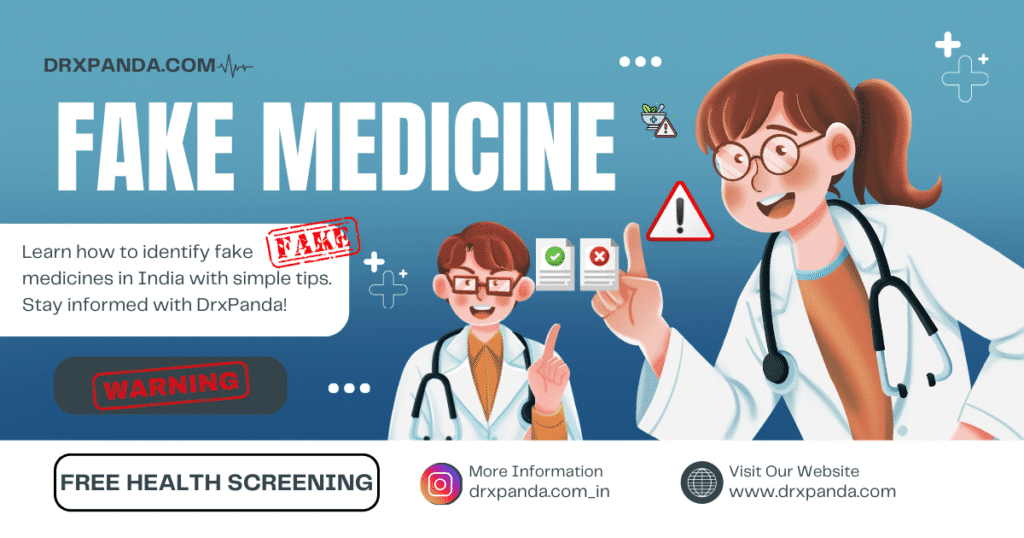Imagine walking into a pharmacy, picking up a medicine, and scanning a QR code to instantly verify its authenticity. Sounds futuristic? Well, in India, this is becoming a reality. The Indian government has initiated a mandate requiring QR codes on vaccines and essential drugs to enhance traceability and curb counterfeit medicines. But how effective is this move, and what challenges lie ahead?

In India, the battle against counterfeit medicines has taken a technological turn. With an alarming 20% of medicines suspected to be counterfeit, the government has mandated QR codes on packaging for the top 300 drug brands.
The Counterfeit Crisis in Indian Pharmaceuticals
India, often dubbed the “pharmacy of the world,” supplies a significant portion of the global generic medicine market. However, this vast supply chain has its vulnerabilities. Counterfeit medicines have been a persistent problem, with reports suggesting that a substantial percentage of drugs in circulation are fake or substandard. These counterfeit drugs not only jeopardise patient health but also undermine trust in the healthcare system.
The Rise of Counterfeit Medicines
Counterfeit drugs are a significant concern in India. They pose serious health risks, especially when patients unknowingly consume them. The introduction of QR codes aims to provide a solution by allowing consumers to verify the authenticity of their medications.
How QR Codes Work on Medicines
QR codes on medicine packaging store essential information such as the product’s identity, expiry date, batch number, and manufacturer’s details. Consumers can scan these codes using their smartphones to access this information, ensuring the product’s authenticity.
Enter QR Codes on Medicines: A Digital Shield
To combat this menace, the government has mandated the inclusion of QR codes on the packaging of vaccines and essential drugs. These codes, when scanned, provide detailed information about the medicine, including:
- Manufacturer’s details
- Batch number
- Expiry date
- Manufacturing license number
This initiative aims to create a transparent and traceable supply chain, making it easier to identify and eliminate counterfeit products.
Real-World Applications and Success Stories
In the Saran district, Bihar, the health department introduced a QR code system across government hospitals. Patients can now scan codes to check the availability of medicines in real-time, reducing inconvenience and ensuring transparency.
Pharmaceutical companies like Mankind Pharmaceuticals and Abbott have already integrated QR codes into their products. Mankind, for instance, has adopted QR codes in 20 of their products, alongside holograms, to safeguard against counterfeiting.
The Challenges: Counterfeiters Outpace Technology
While the initiative is commendable, it’s not without its flaws. Counterfeiters have become adept at replicating QR codes. In Gujarat, authorities uncovered fake QR codes on medicines from reputed brands, leading to a crackdown by the state’s drug regulatory body.
Experts argue that static QR codes are vulnerable to duplication. To bolster security, dynamic QR codes that change with each scan and trigger real-time alerts are being proposed. Additionally, integrating technologies like blockchain could provide an immutable record of a medicine’s journey from manufacturer to consumer.
Looking Ahead: A Safer Pharmaceutical Future
The QR code mandate is a step in the right direction, but it’s just the beginning. For this initiative to be truly effective, it needs to be part of a broader strategy that includes:
- Regular audits and inspections
- Public awareness campaigns
- Collaboration with international regulatory bodies
By combining technology with stringent enforcement and public education, India can pave the way for a safer and more transparent pharmaceutical industry.
Conclusion
QR codes on medicines represent a fusion of technology and healthcare aimed at safeguarding patients from counterfeit drugs. While challenges remain, the commitment to innovation and improvement is evident. As consumers, staying informed and vigilant is crucial. After all, our health is our most valuable asset.
Note: For a visual representation of how QR codes are being implemented in the pharmaceutical industry, you might find this video insightful.

Wishing you happiness every day.